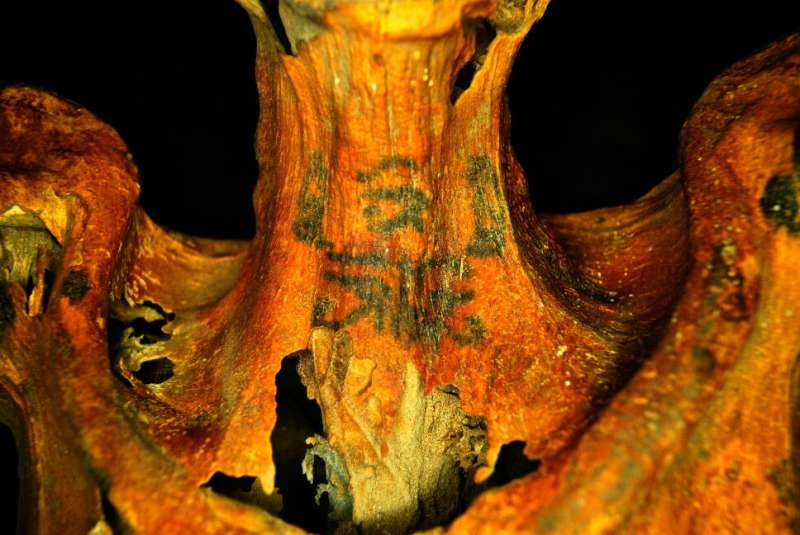
Two researchers from the University of Missouri at Saint Louis and Johns Hopkins University found evidence of tattoos on bodies of Egyptian women thousands of years ago. Their paper was published in The Journal of Egyptian ArchaeologyMarie-Lys Arnette, Anne Austin and Anne Austin describe tattoos and give their thoughts on why they were done.
Archaeologists found an ancient city called Deir el-Medina, near Egypt’s Nile River, in the 1920s. The town was active between 1550 and 1070 BC. Prior research shows that it served as a community to accommodate the men (and their families), who were building tombs in Egypt for the Egyptian monarchy. Researchers over the years have seen that the town was planned well with streets and homes that were accessible to all who lived there. The researchers discovered evidence of tattoos while studying mummies that were found in the area.
Two female mummies were taken from two graves in the village by researchers. The one had been taken and the other was unwrapped. The researchers discovered evidence of a tattoo by studying the mummified skin. They found evidence of a bowl and purification ritual as well as representations of Bes, an Egyptian God who was supposed to protect. women Children, especially during childbirth.
The second mummyIt was still wrapped and studied with infrared photography (archaeologists do not unwrap mummies). It was the remains of an older woman with a second tattoo. This tattoo The wedjat (eyes of Horace) and Bes were seen, this time in a crown of feathers. The zigzag line below the figures likely indicated a marsh where people would go to cool off and sometimes to ease pain such as during childbirth. Researchers believe the two tattoos are a request from those who have them to provide protection during childbirth.
Researchers also note that clay figurines of tattoos on the site were found. lower back and upper thighs for women, which also featured images of Bes.
Additional information:
Anne Austin et.al, Of Ink and Clay – Tattooed Human Remains and Female Figurines of Deir el-Medina The Journal of Egyptian Archaeology (2022). DOI: 10.1177/03075133221130089
© 2022 Science X Network
Citation:
Ancient Egyptian women have tattoos that ask for protection during childbirth (November 11, 2022).
Retrieved 13 Nov 2022
from https://phys.org/news/2022-11-tattoos-ancient-egyptian-women-childbirth.html
Copyright is reserved for this document. This document is not intended to be used for research or private study.
Part may not be reproduced without written permission. The information is only provided for informational purposes.
